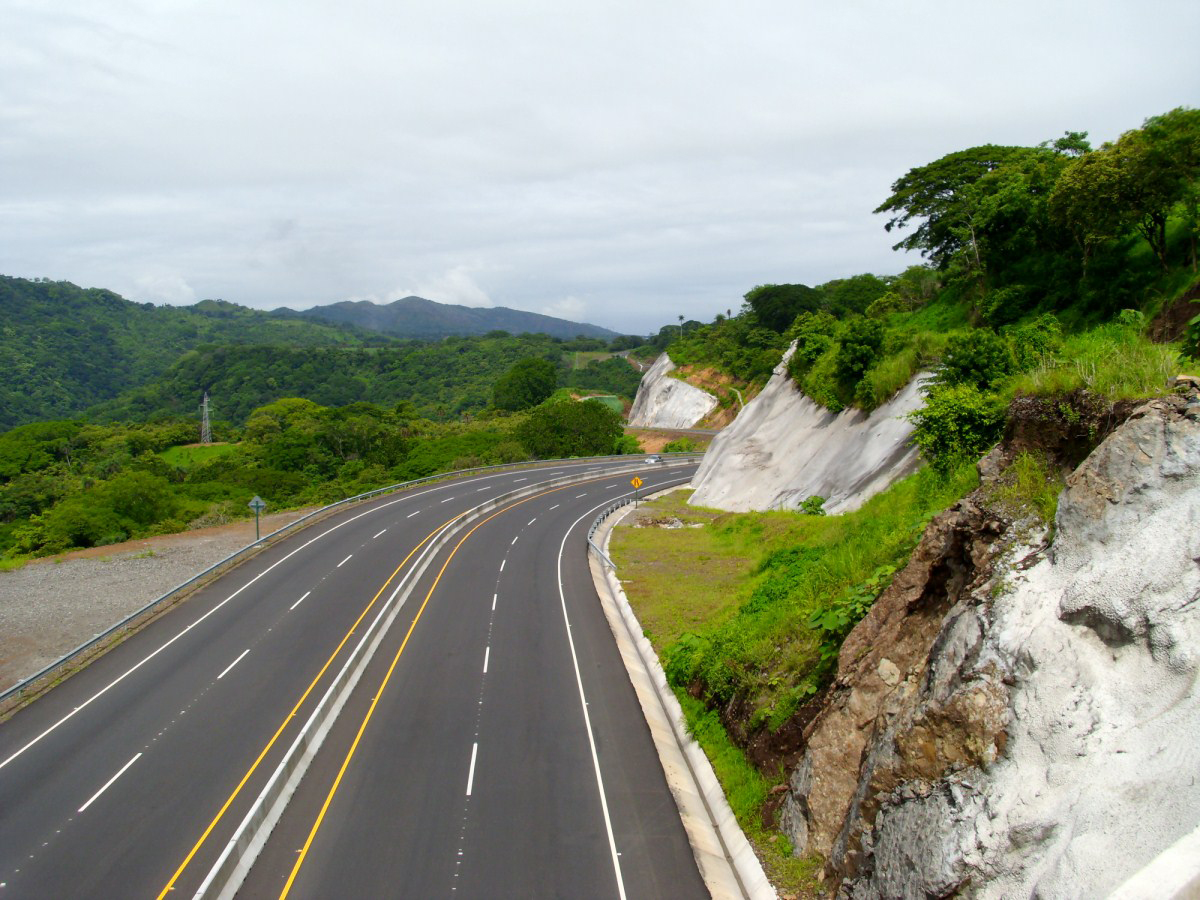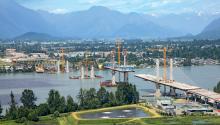Mexico and Central America are home to some of the world's most spectacular infrastructure projects as Patrick Smith reports

A section of Costa Rica's San Jose to Caldera Highway. (Pic: Autopistas del Sol)
Mexico and Central America are home to some of the world's most spectacular infrastructure projects as Patrick Smith reports
When completed in 2012, the US$107 million Baluarte River Bridge will be the highest cable-stayed bridge in the world. Overtaking the Millau Viaduct in France, the bridge in Mexico is said to be "the crown jewel of the greatest bridge and tunnel highway project ever undertaken in North America." More to the point, the 1,124m long structure will be part of a massive investment in highway infrastructure being carried out by the Mexican government through"If the highway and railroad infrastructure is like a country's circulatory system, which takes vital raw materials to each part of its geography, then Mexico's main arteries are its freeways and its veins are its railroads," says ProMexico, information that is sure to emerge at the XX1Vth World Road Congress held in Mexico.
According to figures from SCT, in 2009 Mexican freeways transported 450.9 million tonnes of products while railroads shipped 90.3 million tonnes. The highway network transported nearly 60% of merchandise that circulated through the country, while 12% was sent by rail.
"The constant modernisation of these routes, thanks to the public and private sectors, has helped make Mexico highly competitive in establishing companies whose market is the US." The Baluarte River Bridge is one such project, and once completed the final height of 390m will make it the world's second highest roadway bridge, and it will also have the longest span of any cable-stayed bridge in North America at 520m. It will exceed the John James Audubon Bridge in St Francisville, Louisiana, USA, by 37m.
The region, including Belize, Costa Rica, El Salvador, Guatemala, Honduras, Nicaragua and Panama is also home to many other major projects including the $5 billion Panama Canal expansion programme, the biggest construction project in Latin America, and possibly the biggest construction project in the world at present.
As with this project, work on the Baluarte River Bridge is continuing apace as part of the Durango-Mazatlán Highway, which will provide the only crossing for more than 800km between the Pacific coast and the interior of Mexico.
Only recently, according to national development bank Banobras, Mexico is currently developing more highway projects than any other country in the world, with ten projects underway at present.
Projects such as the Occidente and Pacífico Norte highway packages, as well as the Irapuato Highway in Guanajuato state and Chihuahua interchange mean the country has more active highway tenders than the US, which has nine, and Brazil, with seven.
According to SCT, "the main objective of the current administration is for Mexico to become the most important logistic platform in North America, in both the communications and transportation sectors." The Secretary of Communications and Transportation is key to the development of the country, with the work of the Secretariat generating progress and welfare to thousands of communities, helping to boost the national economy and generating more and better jobs, says the SCT on its website.
It also points out that investment on infrastructure from 2007-2010 was MX$31,575 million ($2.5 million), 53% comprised of public investment and 47% of private sector money.
"Based on the National Infrastructure Program 2007-2012, the most ambitious plan in the history of Mexico, the SCT has focused on promoting strategic projects to increase Mexico's competitiveness and decrease regional inequalities." The SCT says that a substantial improvement in the coverage and quality of infrastructure will only be achieved by fostering the investment of foreign private funding in the infrastructure sector, and the government has improved the conditions for foreign investors.
Meanwhile, the path of the new Durango- Mazatlán Highway is said to be roughly parallel to the famous Devil's Backbone, a narrow road that earned its nickname from the way it follows the precarious ridge crest of the jagged peaks of the Sierra Madre Occidental Mountains.
The dangerous twisting route has "terrifying turns that are so tight there are times the road nearly spirals back into itself." But by offering a safer and more direct route through the mountains, Mexico hopes to improve trade and increase tourism between the city of Durango and the coastal city of Mazatlán.
It is not an easy task. Mexican engineers had to design a route with some 63 tunnels, nearly ten times more than have ever been built on any road in North America.
Including the Baluarte River Bridge, for which the main contractor is
The Baluarte River forms the border between Sinaloa and Durango States, and is said to be the most formidable obstacle on the route.
Engineers chose a cable-stayed bridge so that construction could proceed outward from a single tower on either side of the canyon, avoiding the difficult and expensive construction of temporary false work.
German company
Nine bridge piers and two pylons support the 20m wide superstructure.
At 169m, P5 is the highest pylon with the topmost point of its opposite P6 ending 13m below this. The largest cross section at the foot of the pylon measures 18m x 8.56m, and in the carriageway centre it widens to about 31.3m: the piers then taper upwards and have dimensions of 8m x 4.1m at the top. The pylon legs are not only inclined but also feature different cross-sections along the complete height.
For construction of this complex geometry, PERI developed a self climbing solution on the basis of the ACS system. The ACS V (variable) was used for the forward and reverse inclined external walls. The platforms of this climbing scaffold can be continuously adjusted to match the angle of inclination which means that horizontal working levels are always available.
The variable VARIO GT 24 girder wall formwork is used on the climbing scaffold.
The PERI concept permits the construction site team to quickly adapt the formwork to suit the requirements of each concreting section and thus accurately construct the pylons.
Construction of the pylons is carried out using a total of 46 or 49 concreting sections with variable concreting heights of between 3.28m and 3.9m.
The foreland piers have been designed as double piers, and vary (according to the shape of the terrain) in height up to a maximum of 145m.
Costa Rica, which a few years ago was said to be one huge road construction site, recently agreed loans worth $200 million from the
The go-ahead has also been given for a new road to San Carlos, a project that will include work on the Sifon-Ciudad Quesada section.
The contract has been granted by the national road council,
However, one of the major projects in recent years has been one that was first designed more than 30 years ago.
The 77km highway from the capital San Jose to Caldera, opened in early 2010, cuts 45 minutes off travel to the central Pacific coast.
The Spanish/Portuguese/Costa Rican consortium
Construction started in January, 2008, due to delays in approving an addendum to the contract that was required for banks to approve the $230 million loan.








